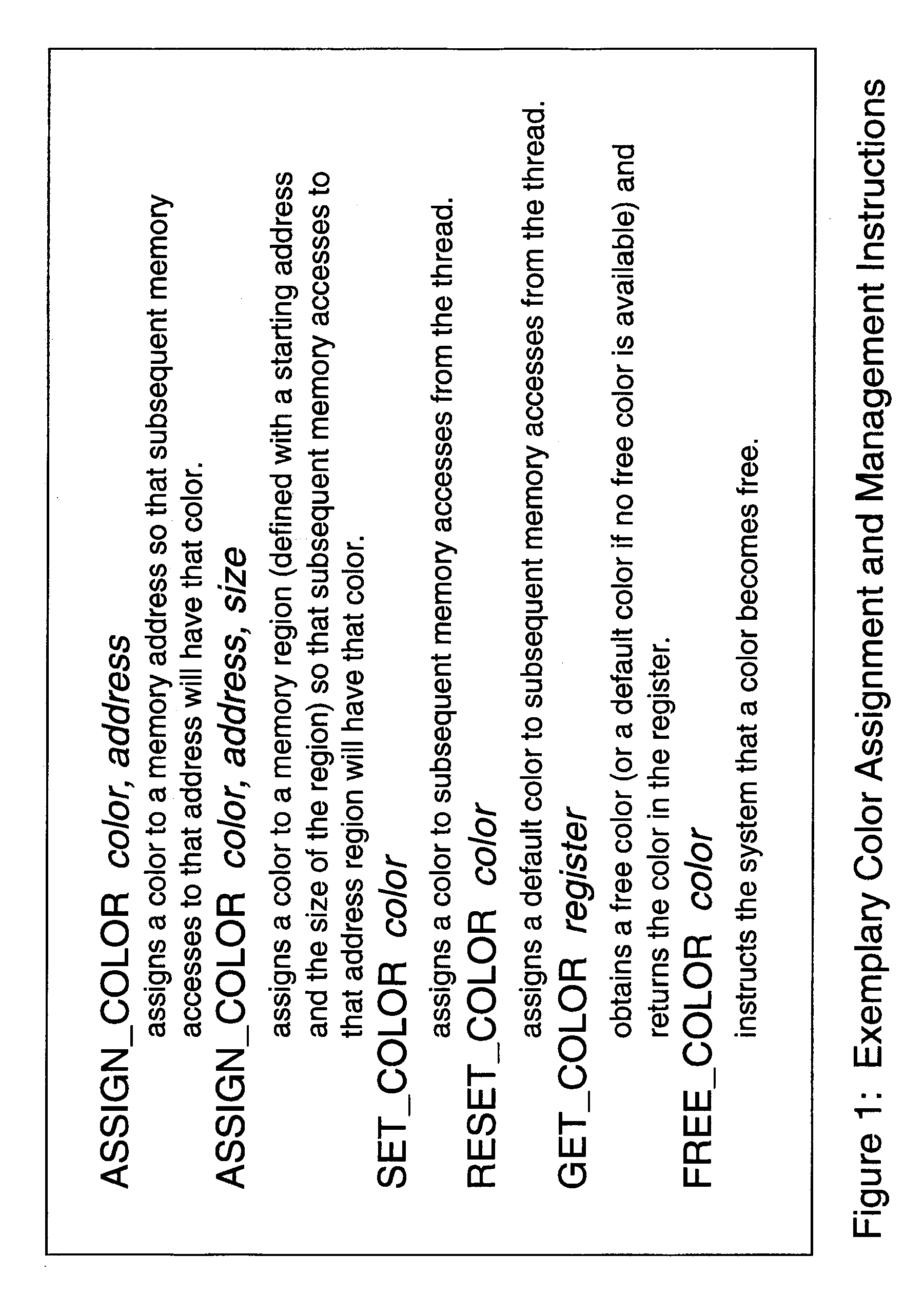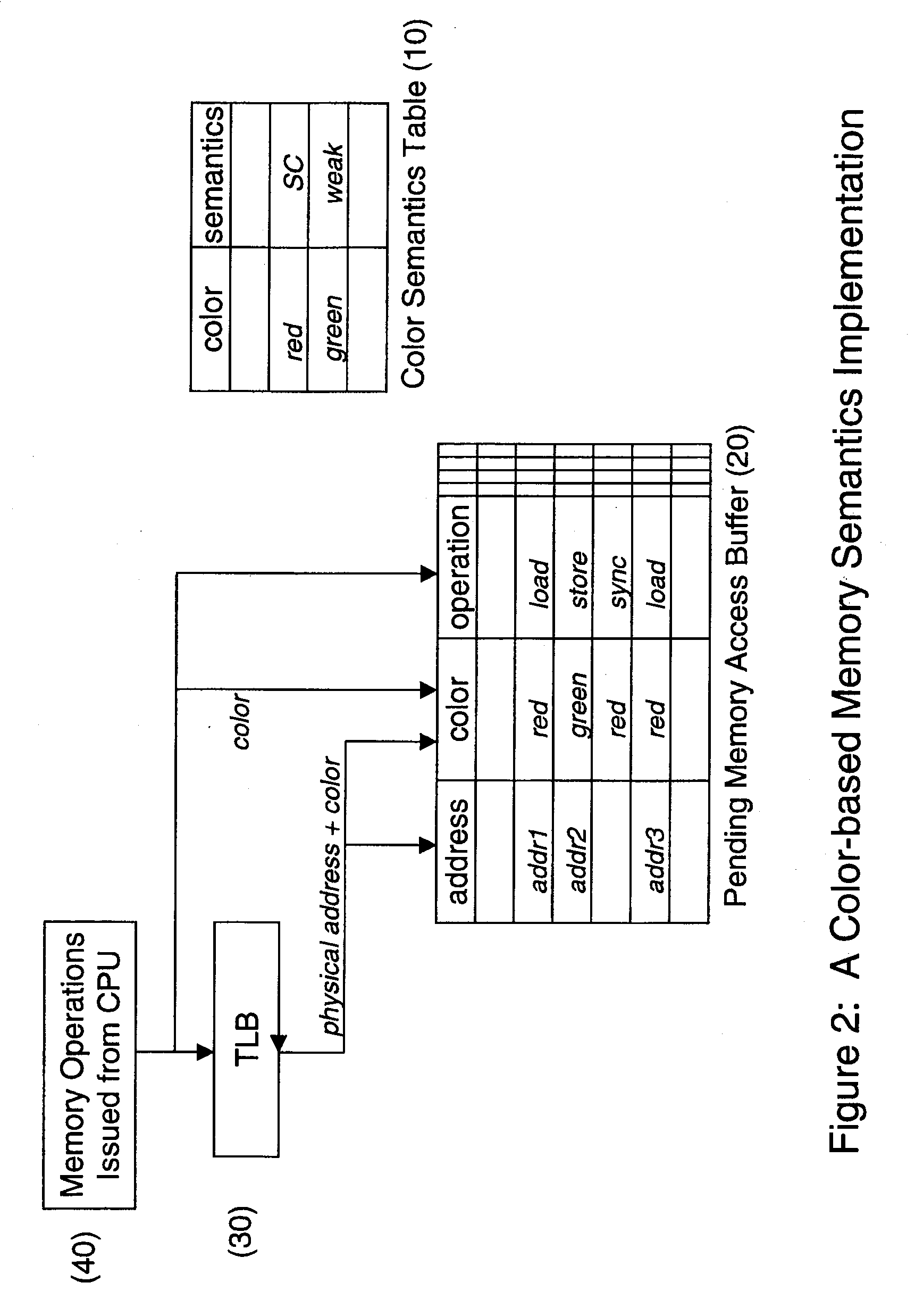Architecture support of memory access coloring
a memory access and architecture technology, applied in the direction of memory address/allocation/relocation, instruments, computing, etc., can solve the problems of inability to distinguish which thread, loss of valuable information, accuracy or efficiency of certain hardware prediction mechanisms
- Summary
- Abstract
- Description
- Claims
- Application Information
AI Technical Summary
Benefits of technology
Problems solved by technology
Method used
Image
Examples
Embodiment Construction
[0015]As mentioned above, Memory Access Coloring provides architecture support that allows software to classify memory accesses into different congruence classes by specifying a color for each memory access. The color information is received and recorded by the hardware at the cache or memory side. Each memory access operation has a color assigned to it by the software, either implicitly or explicitly. Although these colors may be thought of in an abstract sense as a finite “palette” of colors including “red” and “blue” and so forth, this “palette” of colors is in essence simply a finite amount of distinguishers of sets. For example, a color can be a thread identifier, a process identifier, or a processor identifier. When the identifier, for example, a thread identifier, is used, all memory accesses from the same thread have the same color. Rather than using thread or process identifiers, colors can also be assigned based on memory regions. For example, all memory accesses to a part...
PUM
 Login to View More
Login to View More Abstract
Description
Claims
Application Information
 Login to View More
Login to View More - R&D
- Intellectual Property
- Life Sciences
- Materials
- Tech Scout
- Unparalleled Data Quality
- Higher Quality Content
- 60% Fewer Hallucinations
Browse by: Latest US Patents, China's latest patents, Technical Efficacy Thesaurus, Application Domain, Technology Topic, Popular Technical Reports.
© 2025 PatSnap. All rights reserved.Legal|Privacy policy|Modern Slavery Act Transparency Statement|Sitemap|About US| Contact US: help@patsnap.com



